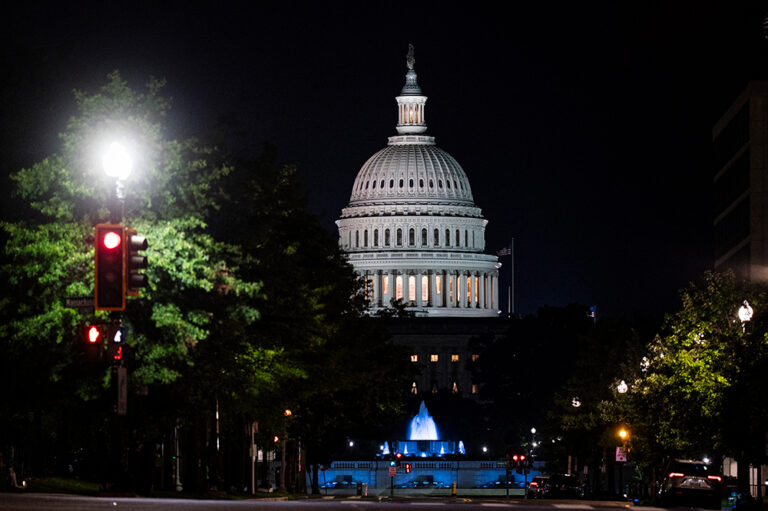The U.S. tax system is progressive, meaning that higher-income individuals pay a higher tax rate. As a result, taxpayers in the highest percentiles of income pay a larger share of total federal revenues. In 2019, the latest year for which complete data are available, taxpayers in the top 1 percent of the income distribution paid 25 percent of all federal taxes (for an average-sized household of three people, the top 1 percent have earnings of at least $782,400 before taxes and transfers).
Because the highest earners have the greatest ability to pay and contribute a significant share of all federal taxes, policies that affect such taxpayers can have a big impact on federal revenues and the overall budget outlook. For that reason, understanding how the richest Americans make their income — and how that income is currently taxed — is an essential component of tax policy.
How Do Sources of Income Differ for High‐Income Taxpayers?
The primary source of earnings for most households is labor income, which includes wages and employer payments for health insurance. In 2019, households in the bottom 80 percent of the income distribution (a three-person household making less than $176,700) received about two-thirds of their income from labor. For that same group, the next largest source of income was from retirement, including private savings and government benefits. Sources of income remain similar for the 81st to 99th percentiles, but reliance on labor income declines significantly for those in the top 1 percent, who make only a third of their income from labor. Instead, those in the top of the distribution make a greater share of their income from investments. Investment income includes capital gains and dividends, business income from pass-through entities, and other capital income. The top 1 percent generated 63 percent of their income from investments, with about half of that coming from capital gains and dividends.
What Unique Tax Rules Impact High-Income Households?
Most earnings are taxed at marginal rates that range from 10 to 37 percent, depending on a taxpayer’s total income. In addition to those rates, some types of income receive preferential tax treatment or are subject to additional taxes. Preferential tax treatment includes provisions that give certain types of income special exclusions, deductions, or rates. Additional taxes — also called surtaxes — increase tax liability based on specific elements of total income. The 3.8 percent additional tax on investment income is an example of a surtax.
Preferential Tax Rules That Benefit High-Income Households
Deviations from “normal tax law” that reduce tax liabilities are called tax expenditures, also known as tax breaks. Two major tax expenditures that apply to non-labor income are:
- the reduced tax rate on capital gains and qualified dividends; and
- the 20 percent deduction on qualified business income (QBI).
High-income taxpayers are able to benefit more from those preferential rules because a greater share of their income comes from sources that are favored. As a result, they are able to utilize those preferential rules to reduce their tax liability. According to the Congressional Budget Office, three-fourths of the tax benefits from the preferential rates on capital gains and dividends go to the top 1 percent of earners. In 2019, the top 1 percent received $106 billion in tax benefits from the preferential tax rates. That same year, the majority of the tax benefits from the QBI deduction went to the top 1 percent, while the bottom 80 percent of earners received only 12 percent of the benefits. The Joint Committee on Taxation (JCT) estimates that the federal government forfeited $216 billion in revenues as a result of those two tax expenditures.
Additional Taxes That Affect High-Income Households
In addition to the preferential tax rules that high-income households are often able to benefit from, high-income taxpayers are potentially subject to additional taxes based on specific components of total income that raise tax liabilities. Those surtaxes include:
- The net investment income tax (NIIT): A 3.8 percent tax on the investment income — excluding non-passive business income — of those with modified adjusted gross income more than $200,000 for single filers or $250,000 for joint filers. The tax was enacted to offset some of the costs of the Affordable Care Act.
- The alternative minimum tax (AMT): Designed to prevent high-income taxpayers from avoiding the individual income tax, certain taxpayers are required to calculate their tax liability twice using ordinary income tax as well as AMT rules. They then pay the greater of the two. In 2024, taxpayers with income greater than $85,700 for single filers and $133,300 for joint filers may be subject to the tax. The top rate for the AMT is 28 percent.
- The additional Medicare tax: All wage and self-employment income is subject to the 2.9 percent Medicare payroll tax. Taxpayers with wages, compensation, or self-employment income greater than $200,000 for single filers or $250,000 for joint filers are subject to an additional 0.9 percent surtax, bringing their total Medicare tax rate to 3.8 percent.
Over the past several years, the NIIT has generated the most revenues of the three surtaxes, as revenues from the AMT have declined substantially due to changes enacted in the Tax Cuts and Jobs Act (TCJA) of 2017. The additional Medicare tax generates about 5 percent ($15 billion in 2021) of total revenues for Medicare’s Hospital Insurance program.
Conclusion
The top 1 percent pay a significant share of all federal taxes, while also benefitting disproportionately from preferential tax treatment. JCT notes that high-income taxpayers are uniquely positioned to take advantage of the preferential treatment of certain sources of income because more of their income is generated through the preferred sources. Over the next year or so, lawmakers will need to make important tax policy decisions — including whether to extend the trillions of dollars in tax cuts from the TCJA that are scheduled to expire in 2025, like the QBI deduction. Regardless of what policies lawmakers pursue, they should consider how tax preferences impact income distribution, the economy, and the imbalance between spending and revenues.
Further Reading
No Taxes on Tips Will Drive Deficits Higher
Here’s how this new, temporary deduction will affect federal revenues, budget deficits, and tax equity.
How No Tax on Overtime Will Affect Federal Revenues and Tax Fairness
This new, temporary deduction will cost $90 billion dollars over the next four years, while undermining tax equity and making the tax system more complex.
The One Big Beautiful Bill Act Is the Most Expensive Reconciliation Package in Recent History
The legislative package will be the most expensive reconciliation bill in a quarter of a century and will add trillions of dollars to the U.S. debt.


